From uncrowded beaches to medieval castles, Windstar’s yachts take you to smaller, secluded ports in the Mediterranean, offering experiences you won’t find on most itineraries. Admire the breathtaking views of Mt. Etna after anchoring off the Sicilian coast, or marvel at the frescoes in the Church of Notre Dame de Saint-Nazaire on the French Riviera. Whether you’re sailing to a lesser-known archipelago or enjoying a leisurely stroll along a quiet cobblestone street, this is the best way to experience Italy, France, Malta and Croatia. (For the rundown on our small ports in Greece, check out “The Best Small Ports in Greece on Windstar’s Mediterranean Cruises.”)
More details on some of our favorite Mediterranean ports below:
Lipari (Lipari, Italy)
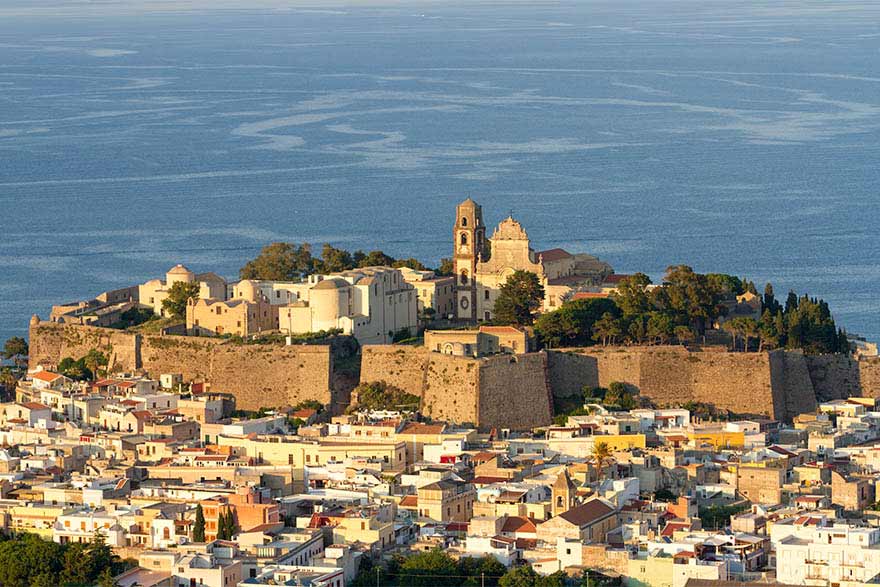
Located in the Tyrrhenian Sea just north of Sicily, Lipari is the largest of the seven Aeolian Islands. The massive walls of Lipari Castle are visible from the namesake port town, along with the pale sea cliffs above the brilliant blue sea. Inside the castle you’ll find the Aeolian Archaeological Museum, which has a fabulous collection of prehistoric to modern artifacts spread throughout six pavilions. The 16th-century castle is also home to the Cathedral of St. Bartholomew and the Church of St. Catherine, among other monuments.
The island’s southwestern-facing Quattrocchi viewpoint offers breathtaking views of the neighboring Vulcano island framed by Lipari’s rugged, rocky cliffs, and it is especially magical at sunset. On the northern tip of Lipari, the beaches at Acquacalda and Papesca beach are surrounded by stark white cliffs, making the aqua water especially vibrant.
Giardini Naxos (Sicily, Italy)
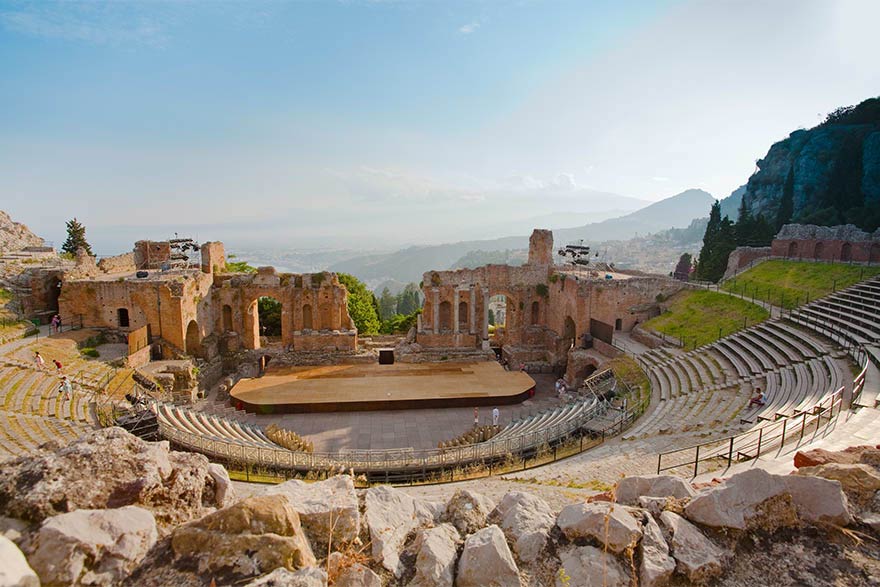
Giardini Naxos is just a mile south of Taormina, and the port town offers access to everything from medieval castles to wineries, with jaw-dropping views of Mt. Etna and a handful of beautiful beaches nearby.
Most of Taormina’s narrow cobblestone streets are closed to traffic, making this an ideal place to explore on foot. Visit the Piazza Vittorio Emanuele and the main street of Corso Umberto, or stop by the Palazzo Corvaja, which was built at the end of the 14th century. Step back into ancient history at the Greek Theater of Taormina, which was built around the third century B.C., and still hosts performances today.
The village of Castelmola sits on a natural terrace built around the ruins of a Norman castle, and the main square is built on white lava stone and lined with trees, making it an idyllic place to go for a stroll. Venture beyond Taormina and visit Savoca, another charming village that you might recognize from “The Godfather II.” The village is home to the Santa Lucia and San Michele churches, built in the 15th and 16th centuries, respectively.
Amalfi (Amalfi Coast, Italy)
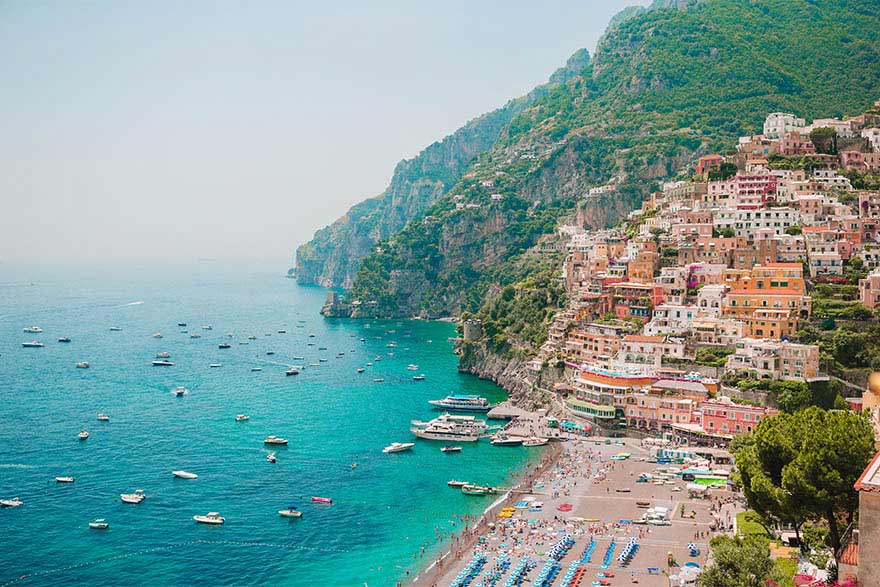
The Amalfi Coast is easily one of the most picturesque regions of Italy, with colorful architecture meeting the coastline in over a dozen lively towns. The views along the narrow, winding Amalfi Coast Road are unlike anything else in coastal Italy, but exploring the area by foot offers just as many breathtaking vistas.
The town of Amalfi is home to the ornate Amalfi Cathedral, and it has a more relaxed vibe than Positano, which is about a 30-minute drive to the west. Formerly a fishing village, Positano is now a trendy resort town, with top-ranked venues like Arienzo Beach Club and the Ill Trident restaurant. Situated nearly a thousand feet above sea level, Ravello is another prime spot along the Amalfi Coast, with Villa Rufolo as one of the main highlights. The estate is comprised of a palace and a handful of buildings around a terrace facing the sea, with a spectacular garden in the courtyard.
Ponza (Ponza, Italy)
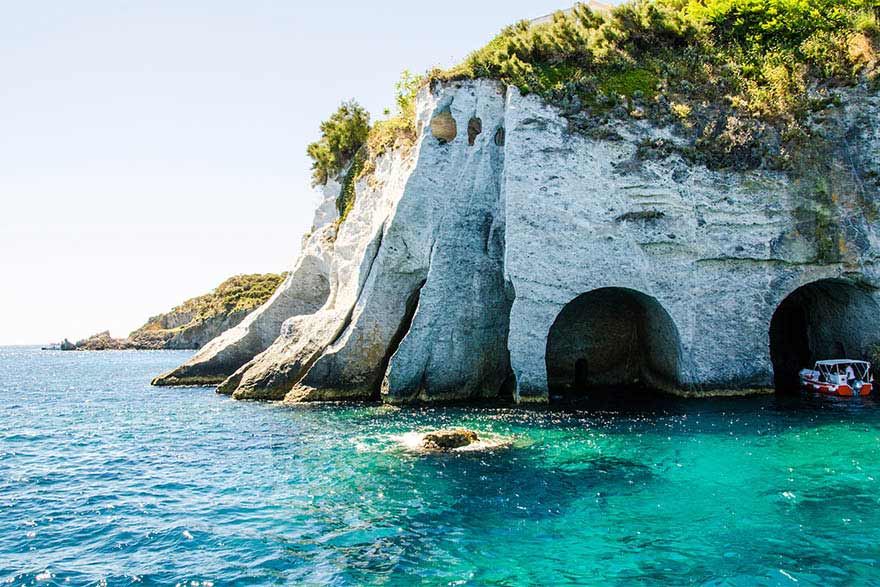
Ponza is the largest of Italy’s Pontine Islands, most famous for its grottoes and gorgeous coastline. Located in the Tyrrhenian Sea east of Naples, Ponza is often referred to as “Capri without the tourists,” with just 3,500 residents.
A private boat tour is one of the best ways to experience Ponza, as this offers access to dozens of grottoes, sea arches and coves. The Grotte di Pilato is a well-preserved Roman monument, while Arco Naturale (aka Arco Spaccapolpi) is an impressive arch in the middle of the aqua water. Cala Cecata and Cala Gaetano are considered some of the most stunning beaches on the island, and though Chiaia di Luna is closed due to rockslides, you can still admire the views from the vista point near the Chiaia di Luna hotel and restaurant.
For those looking to stay on land, Monte Guardia sits nearly 1,000 feet (about 300 meters) above sea level and offers phenomenal views of the bay and the island’s tufa rock towers. The high point of the island also features the remains of a guard tower that was built during the Napoleonic wars.
Sanary-sur-Mer (Sanary-sur-Mer, France)
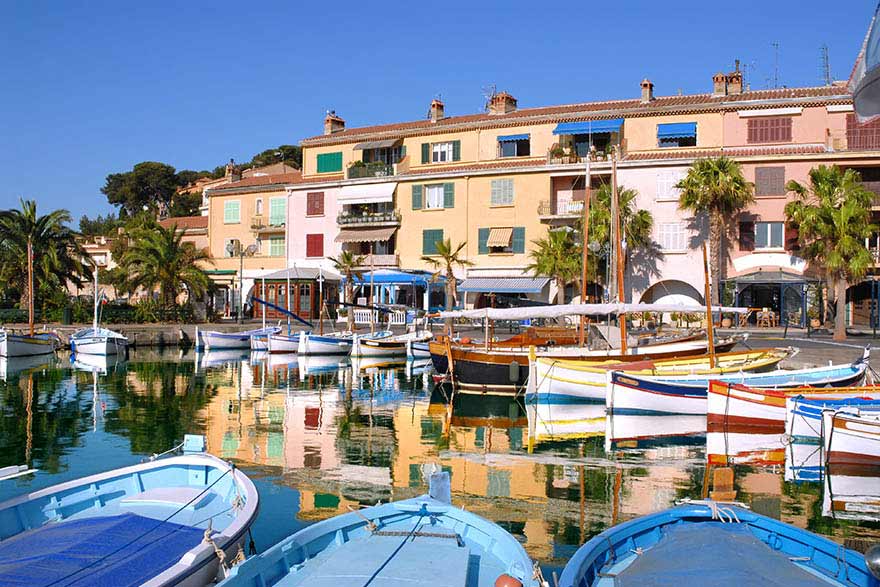
Sanary-sur-Mer, or Sanary, has a more laid-back feel than some of the more popular spots along the Cote d’Azur, like Cannes and Nice. Check out the local shops and markets, and visit the Church of Notre Dame de Saint-Nazaire, which is known for its incredible frescoes. The port is also home to dozens of traditional fishing boats, some of which are over a century old and listed as historic monuments.
Drive northwest to Cassis via the coastal road, and marvel at the views of the limestone cliffs by the sea. Cassis sits at the end of a bay where the valley comes down to the sea, and the village is known for its exceptional seafood. Continue north to Aix en Provence, which was once the capital of the Provence region. Explore the Cours Mirabeau, a wide avenue built on the site of the city’s medieval ramparts, lined with the elegant facades of private mansions with wrought-iron balconies and ornate doorways. Check out the old Mazarin District, founded in 1646 by Archbishop Michel Mazarin, famous for its beautiful walled gardens.
Antibes (Antibes, France)
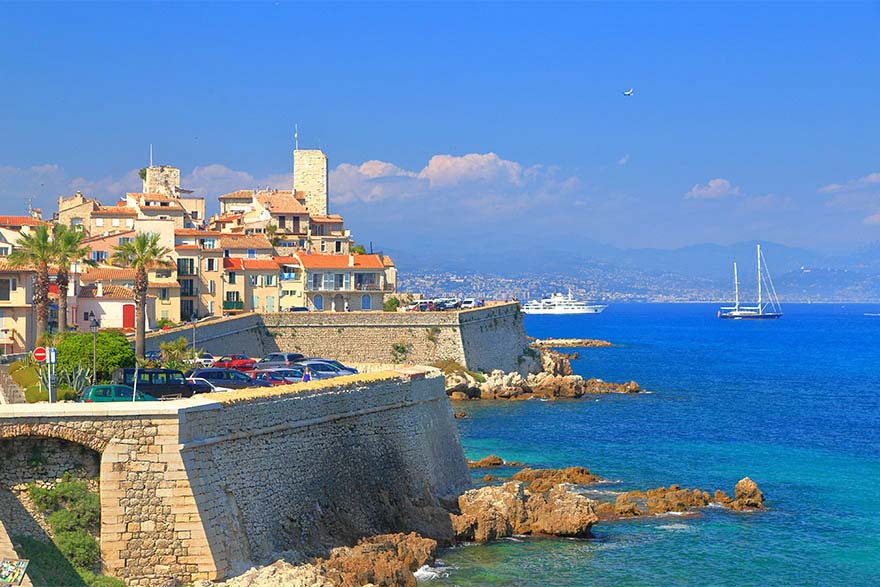
Antibes was founded by Greek merchants in the 5th century, and it is one of the oldest cities in France. The historic old town district has narrow cobblestone streets surrounded by flowers and pastel buildings, with 16th-century ramparts overlooking the Mediterranean Sea. The Provencal market in the old town is one of the main highlights, with local vendors selling fresh fruit, vegetables, meat, cheeses and herbs, plus textiles, ceramics and jewelry.
Enjoy the soft, white sand of the Plage De Salis beach, or take a stroll along Le Sentier du Littoral, a two-mile waterfront path on the southern tip of the peninsula. The drive to St. Raphael along the Golden Corniche is easily one of the prettiest roads in France, mixing the Cote d’Azur’s stunning scenery with villa gardens of palms and orange trees. Shop until you drop in Cannes, or simply sit and relax in one of the cafés along the elegant Croisette — the choice is yours.
Hvar (Hvar, Croatia)
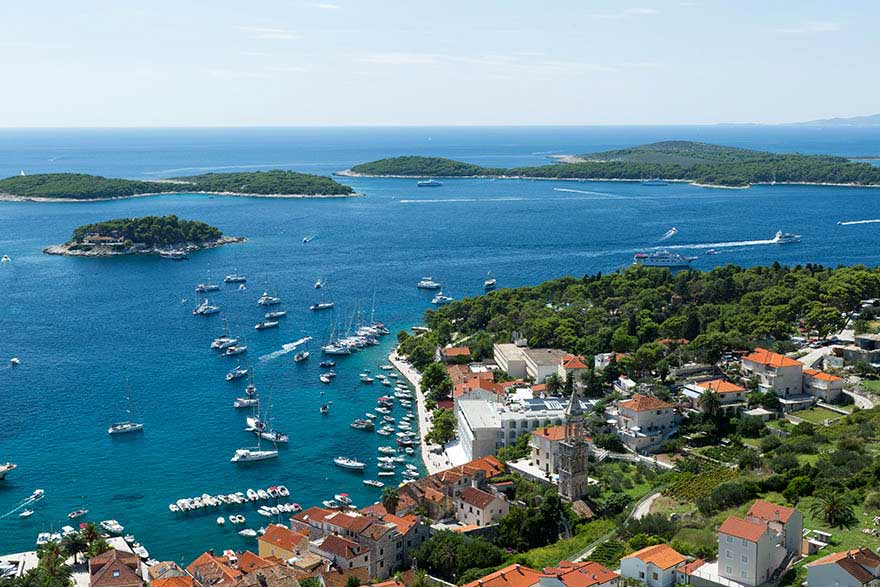
Hvar is the longest of the Croatian islands, with over 150 miles of coastline and numerous stunning bays. The town of Hvar is the largest on the island, and from views of the islands in the Adriatic Sea to historic cathedrals, you could spend all day exploring this charming port city. The Hvar Arsenal is right next to the port, and it was first built in the 14th century as a maintenance shipyard. In 1612 Europe’s first community theater was incorporated into the city center, and just a few hundred feet down the street is St. Stephen’s Square. The main attraction here is the 14th-century St. Stephen’s Cathedral, whose bell tower can be seen from the harbor.
Explore the town of Hora and the Stari Grad Plain, which was added to the list of UNESCO World Heritage Sites in 2008. Ionian Greeks from Paros founded what is now Stari Grad in the 4th century BC, using stone walls to separate fields of grapes and olives, among other crops. Hvar is also known for its lavender production, and the nearby village of Velo Grablje even has a lavender festival in the summer. Another option is sailing from Hvar to the Pakleni Archipelago, a network of small islets to the southwest of Hvar. The islands are covered in lush vegetation, and the bays around their sandy beaches are perfect for swimming and snorkeling. Palmizana Bay is particularly idyllic, with its tranquil aqua waters and a handful of docks and seating areas right on the water.
Gozo (Gozo, Malta)
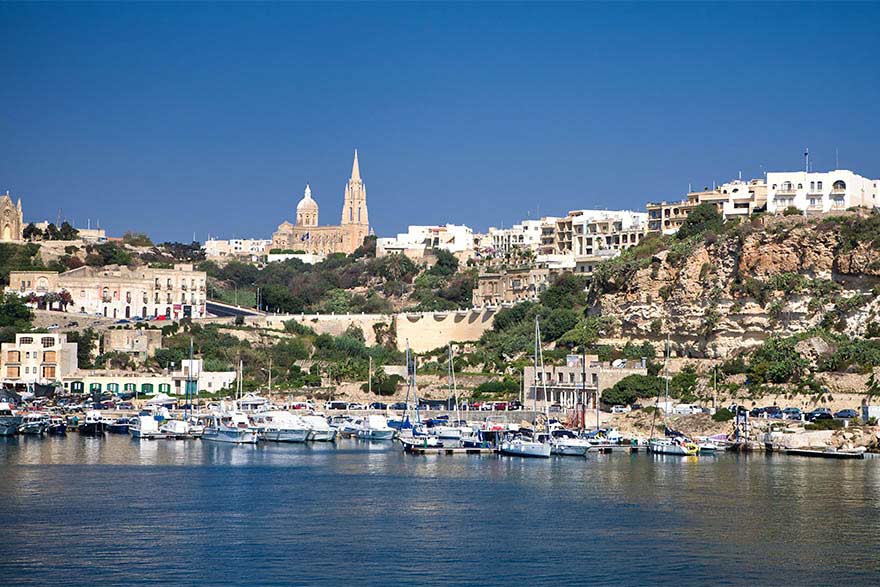
Gozo is the second largest island in the Maltese Archipelago, and it is considerably less developed than the island of Malta. Gozo is considered one of the top diving destinations in the Mediterranean, and the island is also rich in ancient history.
Head to Gozo’s capital of Victoria and visit the Citadel, which was constructed to serve as a sanctuary from attack by Barbary corsairs and Saracens. It is believed that the area has been inhabited since the Stone Age, and archaeological remains confirm that the site was occupied during the Bronze Age, though many of the structures inside were rebuilt in the 17th century. Just a few minutes down the road are the Xewkija Rotunda (also known as the Rotunda St. John Baptist Church) and the Ggantija Temples, which are older than the Pyramids of Egypt.
As far as natural wonders, Dwejra has amazing views of the Inland Sea and Fungus Rock, and the bay is also home to the Blue Hole, which is the premier diving spot in the Mediterranean. On the other side of Gozo, the resort town of Marsalforn has a small sandy beach and several platforms with ladders for access to the bay.




















































